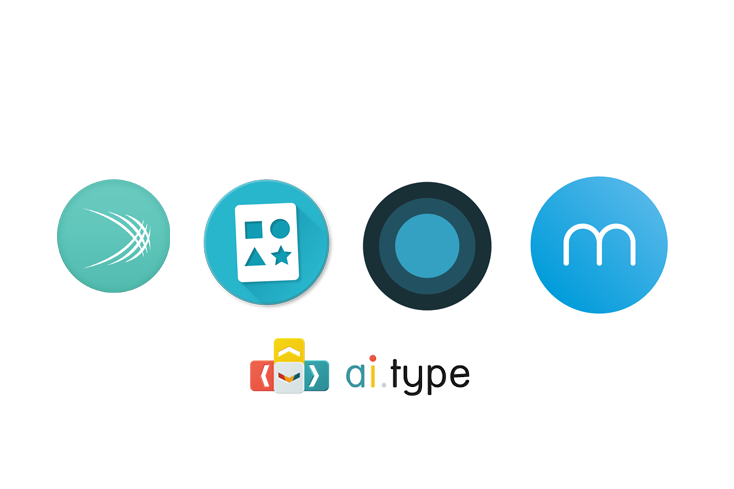
Phone: 212 520 1686
Email: info@yourcpf.org
5 Alternative Smartphone Keyboards

Having disabilities can make typing or texting on a smartphone cumbersome and difficult. Many companies have made alternative keyboards to the ones that smartphones come with. Both iOS and Android have support for changing the stock keyboard. If you don’t like the one your phone comes with, you can change it and use a different one.
Many of these keyboards offer features that are beneficial to users who have disabilities. Here are our favorites. All of these apps and keyboards are free with affordable “pro” versions available. None of the features discussed here are exclusive to the “pro” versions of these apps.
SwiftKey Symbols
This one isn’t technically a keyboard. It’s an attempt at an Augmentative and Alternative Communication (AAC) app by the makers of SwiftKey. AAC devices are traditionally for people who cannot speak. Users tap on a picture to produce the word, and then the word is said out loud with the press of a button. Symbols has one unique feature that many AAC apps don’t. Most AAC apps have “favorites” and “common phrases.” Symbols chooses to forego that in favor of machine learning prediction. It learns your habits and what you like. It even factors in things like date and time when making predictions. Symbols is in beta right now, so predefined words are limited. Although Symbols is a good start—and a great effort for the price—as it sits right now it cannot compete with other standalone AAC apps.
ai.type
ai.type is one of the most customizable keyboards we’ve seen. One interesting feature is while most smartphone keyboards have 4 rows, ai.type has 5. This fifth row can be customized to be either: a dedicated number row, a “utility” row with text editing features, a dedicated symbol row, or a row with your most used emoji. It’s the only keyboard we’ve used that users can resize “on-the-fly”. Users who take advantage of customizability will love ai.type.
Minuum
Minnum is a keyboard that at first glance may seem daunting—especially with a disability. The idea behind Minuum is simple. Keyboards are too big, and they should be smaller. It takes up just a small fraction of the user’s screen. Minuum is amazing for accessibility because of its “sloppy typing mode”. This is something the developers want you to keep turned off—because the keyboard isn’t designed to be used like this all the time—but when kept on, Minuum expands to full size and assumes the user needs to type fast and will make mistakes. This makes the word prediction more sensitive to errors. Although this keyboard may seem unusable to people with disabilities, the sloppy typing mode makes it one of our favorites.
Fleksy
Fleksy is a keyboard that is primarily designed for people who can use a traditional smartphone keyboard. Although it doesn’t offer anything particularly special in terms of traditional accessibility features, it offers the ability to change its size, and “swipe” text so you can type with just one finger. Using swipe mode, you can also predict words, add punctuation, and remove words. With Fleksy, there’s no need to use more than one finger if you don’t want to, and because of this we really like it.
SwiftKey
This keyboard is one of the more traditional keyboards, but between its customizability and learning, it cannot be beat. When a user installs SwiftKey, the first thing the app does is go through your social media, emails, and texts (with permission) to learn how you type. Using this data, it then learns from everything you type going forward, making SwiftKey’s prediction the best in its field. This may not seem like an accessibility feature, but consider that you can type your most texted sentences with just a few taps using only one finger. It has everything users need from an alternative keyboard, even users who have disabilities.




